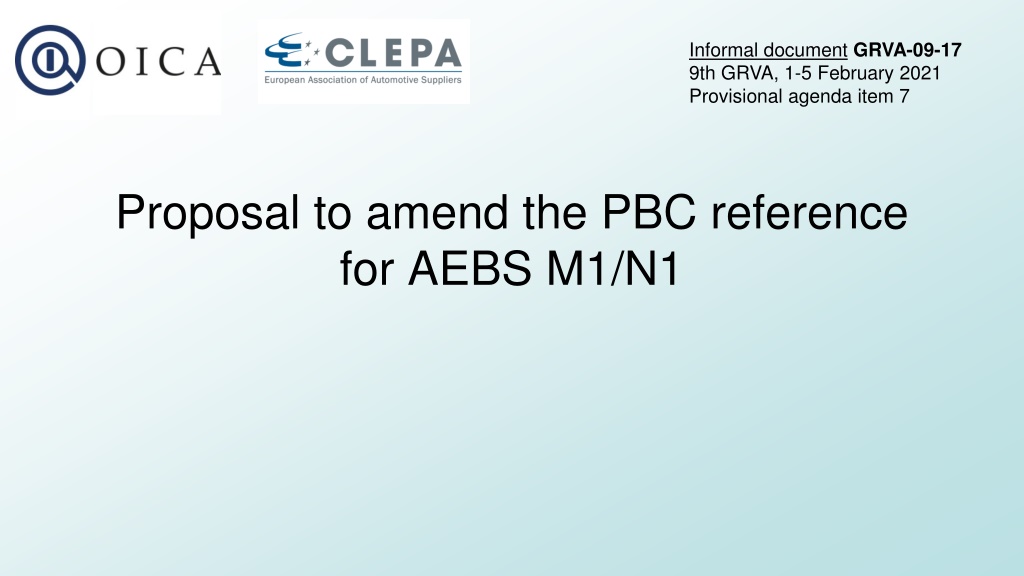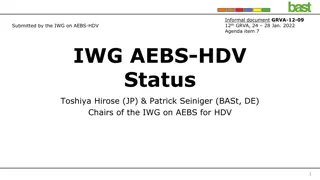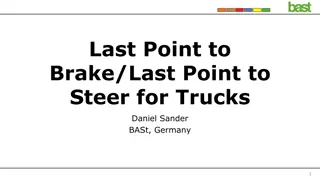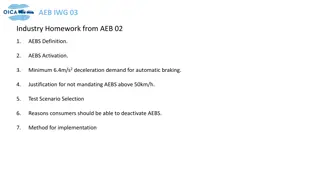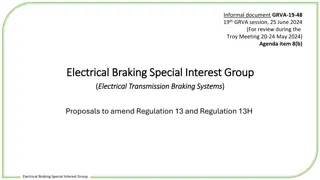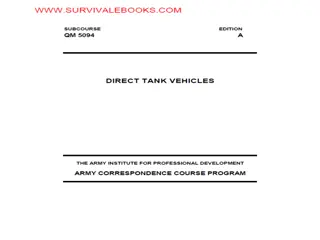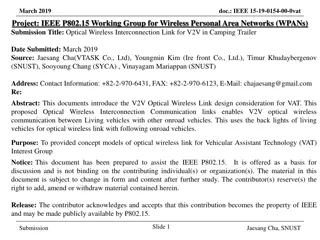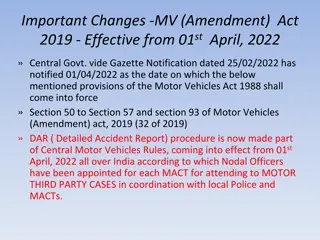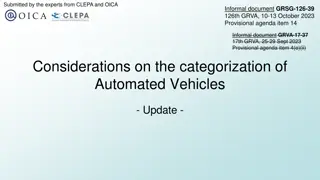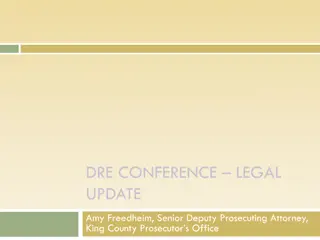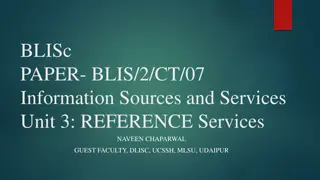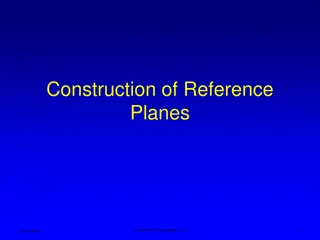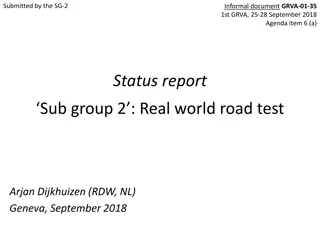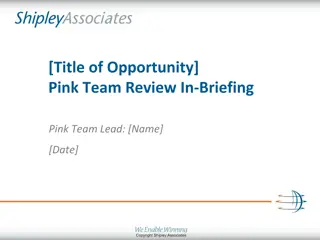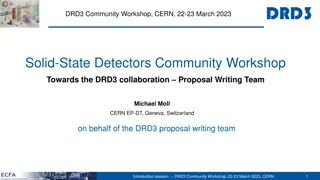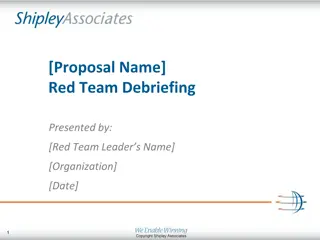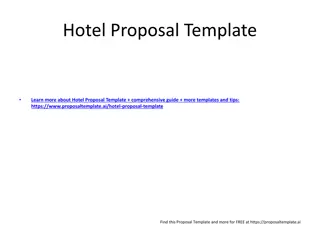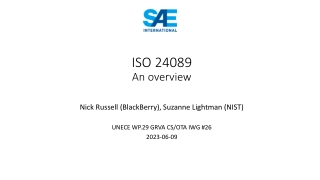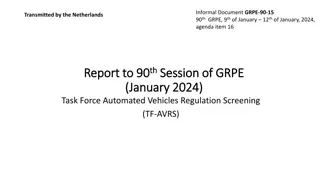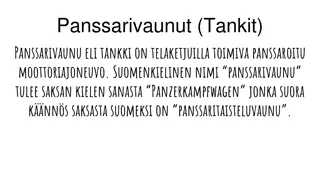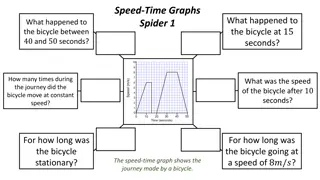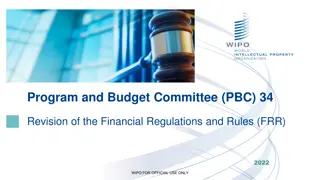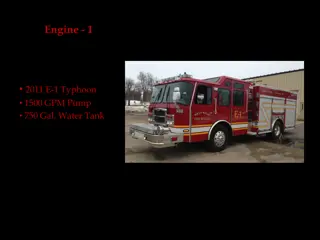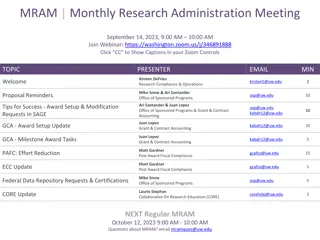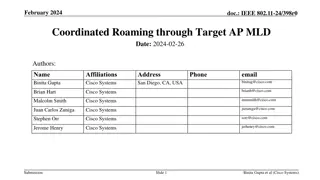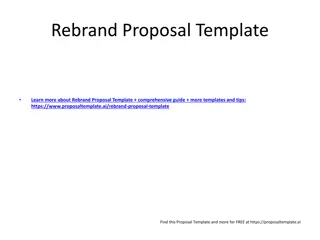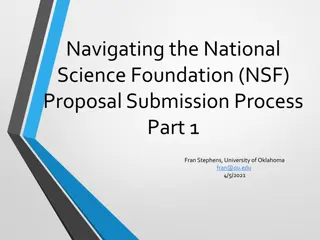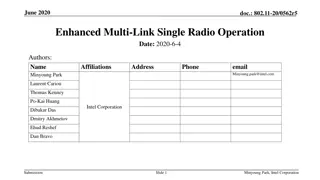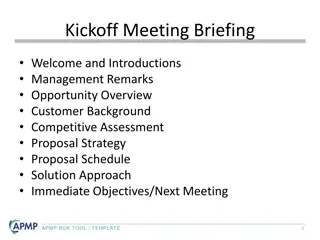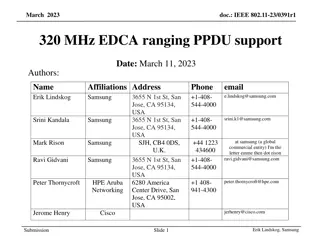Proposal to Amend PBC Reference for AEBS in Vehicles
The proposal aims to update the Peak Braking Coefficient (PBC) reference for Advanced Emergency Braking Systems (AEBS) in vehicles by adopting newer methods that consider the improved tire technology and road conditions. It suggests using updated ASTM standards and testing methods to align PBC values with modern tire performance, enhancing safety and braking efficiency. The document discusses the necessity of adapting PBC values to match current tire-road combinations and the rationale behind the proposed amendments.
Download Presentation

Please find below an Image/Link to download the presentation.
The content on the website is provided AS IS for your information and personal use only. It may not be sold, licensed, or shared on other websites without obtaining consent from the author. Download presentation by click this link. If you encounter any issues during the download, it is possible that the publisher has removed the file from their server.
E N D
Presentation Transcript
Informal document GRVA-09-17 9th GRVA, 1-5 February 2021 Provisional agenda item 7 Proposal to amend the PBC reference for AEBS M1/N1
Proposal to adopt the Peak Braking Coefficient (PBC) Two different PBC methods: UN R152 refers in 6.1.1.2 and 6.1.1.3 to 2 PBC demonstration methods: The American Society for Testing and Materials (ASTM) E1136 standard reference test tyre in accordance with ASTM Method E1337 90 or The k-test method specified in Appendix 2 to Annex 6 of Regulation No. 13-H (with vehicle with state of the art OEM production tires). Conclusion for both methods: PBC needs to be adapted for today s tyres Over the last decades tyres have reached a higher grip. So we ought to adopt to higher friction on average tyre-road- combinations. ASTM already recognises this progress, replacing the standard reference tyre E1136 with F2493. The ASTM E1337-90 determines a conversion factor, because tests with different tyres (e.g. E1136 or F2493) on the same track will result in different PBC values. F2493 14 (New ASTM Test Tyre) E1136 14 (Old ASTM Test Tyre) Front View: P225/60R16 97S Radial Standard Reference Test Tyre Front View: P195/75R14 Radial Standard Reference Test Tyre Example - a of PBC 0.9 based on the E1136 can be converted to 1.017 with the F2493 tyre as follows: 1.017 is the preferred PBC using the ASTM method (0.9 1.17) 0.0360 = 1.017.
Peak Braking Coefficient (PBC), determination with k-value method 9 0.9 max. Braking Force Nominal Load = 1.02 __ 9.81 m/s m/s = PBC = = PBC = Theoretical max deceleration capability with 100% ABS efficiency 1.02 ABS braking efficiency ca. 90% Adhesion (PBC=Peak Braking Coefficient) is always the result of a tyre-road-combination. With a PBC value of 1.02 it is possible to achieve a deceleration of 9 m/s2 during ABS control. ABS control range Brake slip [%] 1.02 is the preferred PBC using the k-value method.
Proposal to adopt the Peak Braking Coefficient (PBC) Justification: Over the last years tyre/road friction parameters have improved and PBC values should be adapted accordingly. Considering the ASTM method E1337-90 (12.4.2) and the UTAC measurements comparing both standard reference tyres on same tracks (AEBS-11-11) the PBC values should be as follows: PBC = 0.9 with old ASTM standard reference tire E1136 (P195/75R14) PBC = 1.017 with new ASTM standard reference tire F2493 (P225/60R16 97S) For the k-test method with vehicle under test production tires the PBC = 1.017 is also reasonable.
Proposal to adopt the Peak Braking Coefficient (PBC) Proposal: 2.13. "Dry road" means a road with a nominal peak braking coefficient of 0.9 [as specified in par. xxx] or alternatively [that permits a mean fully developed deceleration of 9m/s2]. 6.1.1.1. The road test surface shall have a consistent slope between level and 1 per cent and have a nominal peak braking coefficient (PBC) of 0.9 unless otherwise specified, when measured using the American Society for Testing and Materials (ASTM) of E1136 standard reference test tyre in accordance with ASTM Method E1337 90 at a speed of 40 mph 1.017 unless otherwise specified, when measured using either: a) The American Society for Testing and Materials (ASTM) of F2493 standard reference test tyre in accordance with ASTM Method E1337 90 at a speed of 40 mph; or b) The k-test method specified in Appendix 2 to Annex 6 of Regulation No. 13-H.
